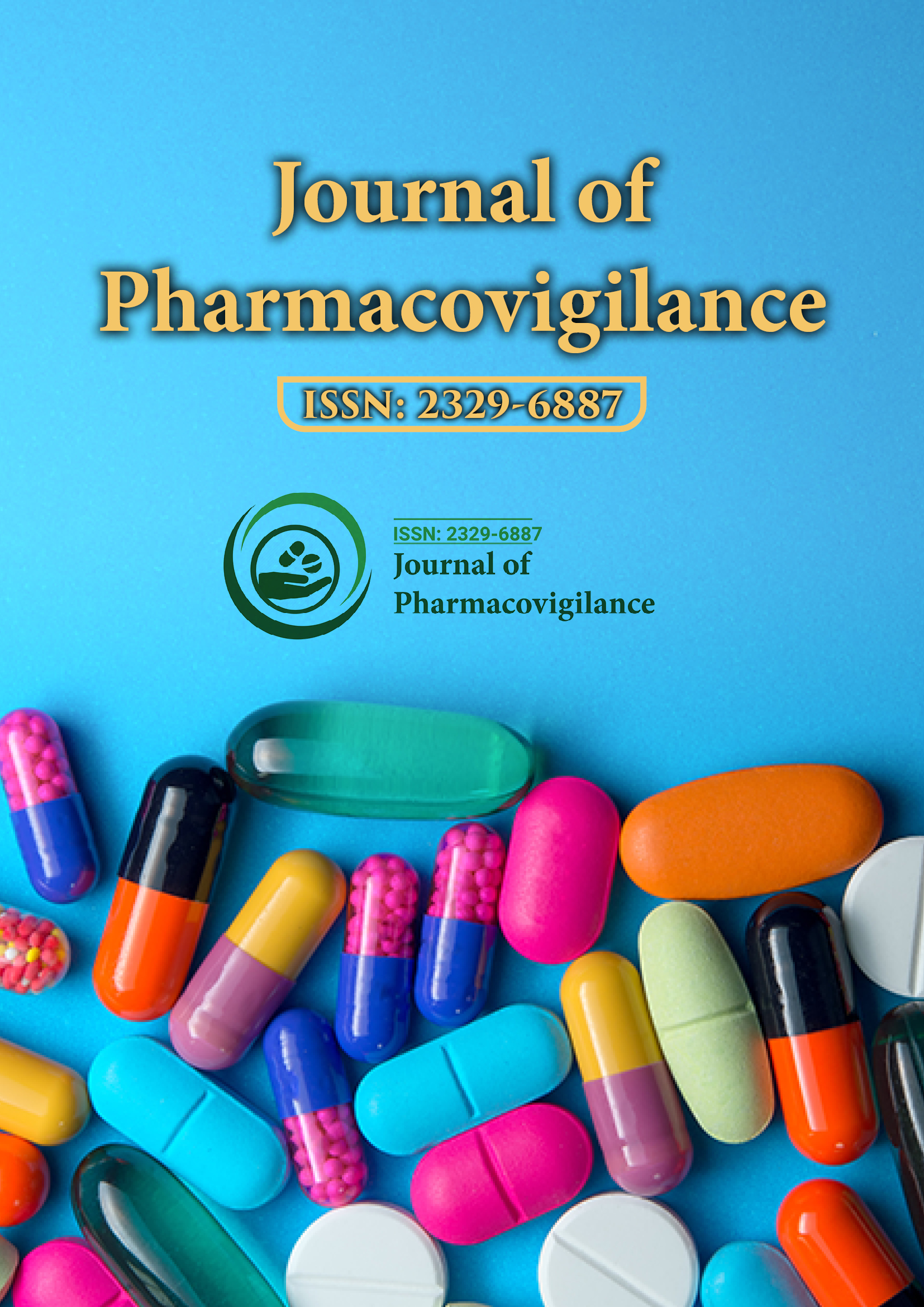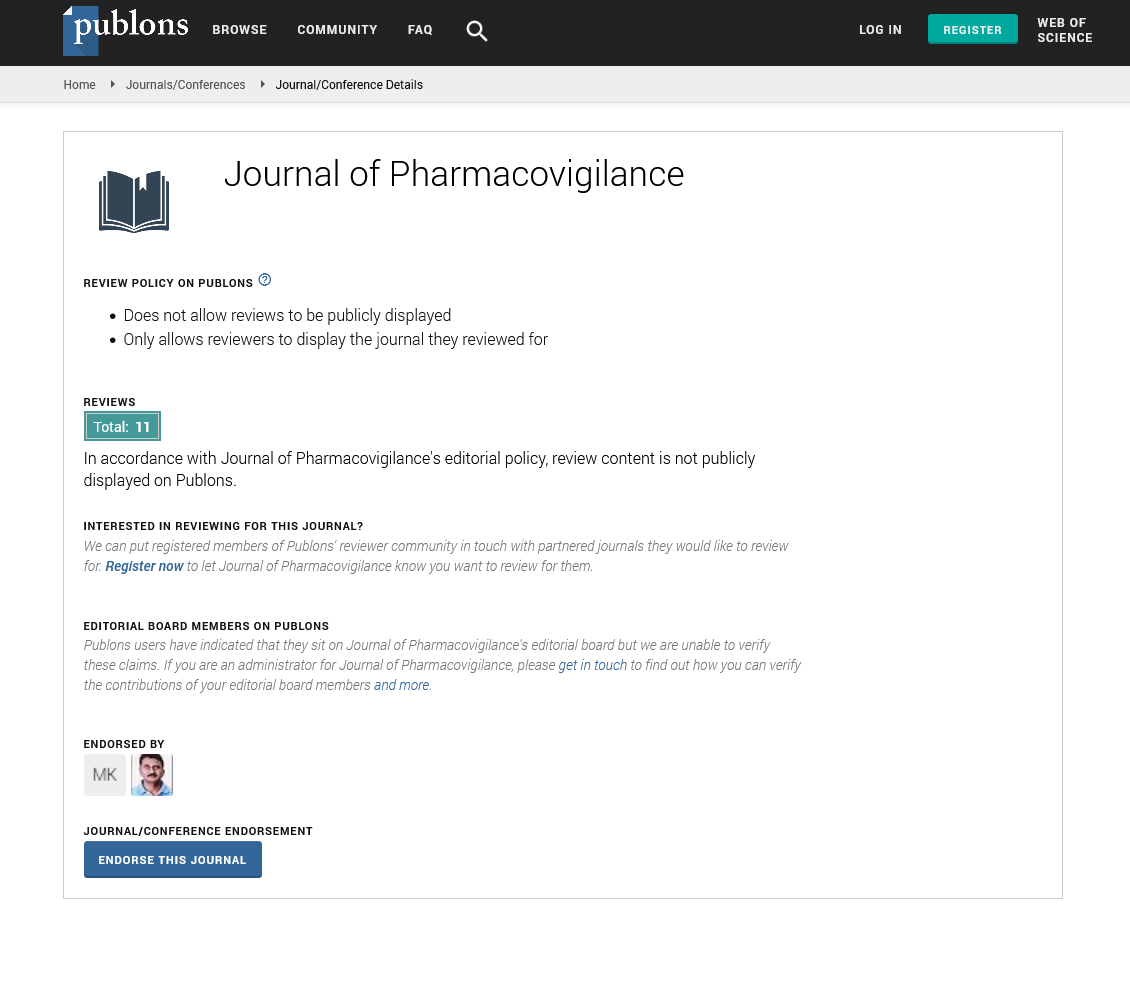Indexed In
- Open J Gate
- JournalTOCs
- The Global Impact Factor (GIF)
- RefSeek
- Hamdard University
- EBSCO A-Z
- OCLC- WorldCat
- Publons
- Euro Pub
- Google Scholar
Useful Links
Share This Page
Journal Flyer

Open Access Journals
- Agri and Aquaculture
- Biochemistry
- Bioinformatics & Systems Biology
- Business & Management
- Chemistry
- Clinical Sciences
- Engineering
- Food & Nutrition
- General Science
- Genetics & Molecular Biology
- Immunology & Microbiology
- Medical Sciences
- Neuroscience & Psychology
- Nursing & Health Care
- Pharmaceutical Sciences
Opinion Article - (2025) Volume 13, Issue 2
Continuous Monitoring of Drug Safety: Protecting Public Health Beyond Approval
Olivia Morgan*Received: 26-May-2025, Manuscript No. JP-25-29712; Editor assigned: 28-May-2025, Pre QC No. JP-25-29712; Reviewed: 11-Jun-2025, QC No. JP-25-29712; Revised: 18-Jun-2025, Manuscript No. JP-25-29712; Published: 25-Jun-2025, DOI: 10.35248/2329-6887.25.13.514
Description
The importance of ongoing drug safety surveillance after a medication enters the market cannot be overstated. While clinical trials are an essential part of the drug development process, they are conducted under controlled conditions and often involve relatively small groups of participants. These trials are designed to assess the drug’s effectiveness and identify common side effects, but their limitations mean they cannot fully predict how a drug will behave in the broader population once it is approved and widely used. This makes continuous monitoring of drug safety after approval a vital part of patient care and public health protection.
Once a medication becomes available to the general public, it is used by a much larger and more diverse group of people, including individuals with different ages, medical histories, genetic backgrounds, and concurrent medications. This diversity can lead to the emergence of adverse effects that were not observed during clinical trials, including rare or long-term side effects. Post-marketing surveillance, also known as pharmacovigilance, plays a key role in identifying and managing these risks to ensure that medications remain safe and effective over time.
A fundamental component of post-marketing surveillance is the collection and analysis of Adverse Drug Reaction (ADR) reports. These reports can be submitted by healthcare professionals, patients, caregivers, and pharmaceutical companies. Each report adds to a growing database of real-world safety information. When patterns or unusual occurrences begin to emerge from this data, they may signal a potential safety concern. Regulatory authorities and medical experts then evaluate the signal, assess its clinical significance, and determine the appropriate course of action. This could include updating the product label, issuing safety warnings, restricting the drug’s use, or in extreme cases, withdrawing the medication from the market.
Encouraging widespread and consistent reporting is essential for an effective pharmacovigilance system. Healthcare providers are often on the front lines of detecting and responding to adverse effects, and they need ongoing education and support to recognize, document, and report these issues properly. Training programs and clinical guidelines can help reinforce the importance of timely and accurate reporting as part of routine medical practice.
Patients also play a critical role in drug safety monitoring. When patients are educated about potential side effects and encouraged to report any unusual reactions, they can contribute valuable firsthand insights. User-friendly reporting mechanisms, including online forms, mobile applications, and toll-free numbers, have made it easier for both patients and healthcare professionals to share safety information quickly and efficiently. These simplified systems remove barriers to participation and help ensure that more adverse events are captured and analyzed.
Advancements in technology have significantly improved the capabilities of post-marketing surveillance. Modern data analytics tools, including Artificial Intelligence (AI) and machine learning algorithms, can process vast volumes of safety data with speed and precision. These tools help identify patterns and correlations that might go unnoticed through manual review alone. Integration with Electronic Health Records (EHRs) and pharmacy databases provides a richer context for understanding adverse events, such as patient demographics, medical history, and concurrent medications.
Global collaboration among regulatory agencies is another crucial aspect of effective drug safety monitoring. Adverse events that appear in one country may indicate a broader safety issue, and sharing information across borders enables a faster and more coordinated response. International networks and databases, such as those managed by the World Health Organization (WHO) and other regulatory bodies, allow for timely data exchange and consistent safety actions worldwide.
Conclusion
Healthcare professionals, patients, regulatory agencies, and pharmaceutical companies must all work together to ensure medication safety. This collaborative approach helps maintain public trust, enhances patient outcomes, and supports informed decision-making in healthcare. As medications continue to evolve and reach broader populations, sustained vigilance and cooperation will remain essential to protecting patient well-being and ensuring the safe use of medicines. This cooperation ensures that safety measures are not limited to national boundaries but are part of a collective global effort to protect public health.
Citation: Morgan O (2025). Continuous Monitoring of Drug Safety: Protecting Public Health Beyond Approval. J Pharmacovigil. 13: 514
Copyright: © 2025 Morgan O. This is an open-access article distributed under the terms of the Creative Commons Attribution License, which permits unrestricted use, distribution and reproduction in any medium, provided the original author and source are credited.

